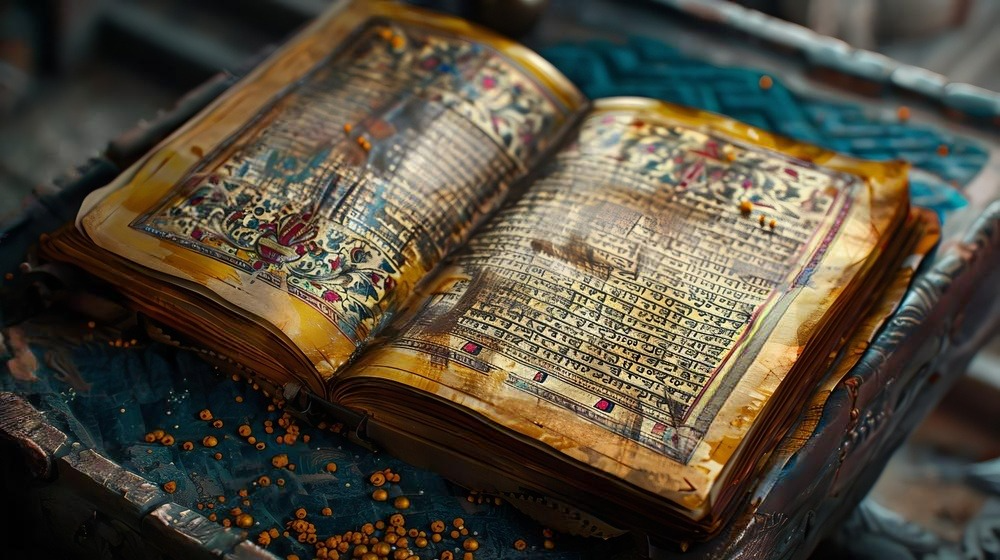🕉️ The Sacred Samaveda 🌺

Samaveda, “Veda of Melodies” 🌸, stands as one of Hinduism’s four primordial scriptures. This ancient wisdom, whispered through millennia, forms the bedrock of Vedic spiritual tradition. 🕊️
Emerging from the mists of antiquity, the Samaveda pulses with the rhythmic heartbeat of Vedic rituals. Its very essence is music – a celestial bridge between mortal devotion and divine grace. 🎶
📖 Etymology reveals its soul:
“Sama” (melodic nectar) + “Veda” (cosmic knowledge) =
A symphony of sacred syllables. ✨
More than mere text, it’s a sonic tapestry – meticulously preserving:
- 🎵 Celestial intonations
- 📜 Ritual chant architecture
- 🔮 Mystical meter patterns
Each hymn forms a mantric vessel, carrying practitioners to the threshold of the Infinite. 🌌
📜 Divine Origins
Born from the cosmic wisdom of the Rigveda, the Samaveda transforms ancient verses into celestial melodies through its unique Ganas (musical collections).
1,875 Unique Melodies
Preserved across generations
Two Primary Arcas
Purvarcika & Uttararcika
Udgatri Priests
Guardians of sacred sound
🌿 The Soma Ritual Symphony
At the heart of Vedic mysticism lies the sacred Soma ceremony:
- 🍵 Divine Elixir: Hallucinogenic brew connecting mortals to gods
- 🔥 Fire Rituals: Choreographed offerings to cosmic forces
- 🎵 Harmonic Invocations: Precise melodic patterns for manifestation
🌟 Living Legacy
Though less studied today, the Samaveda continues to:
History of the Samaveda

